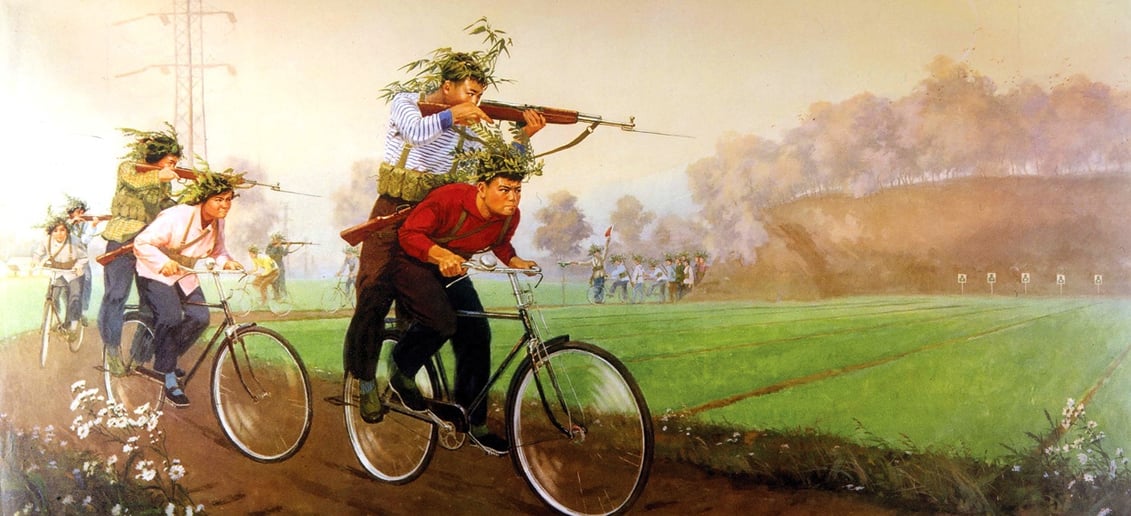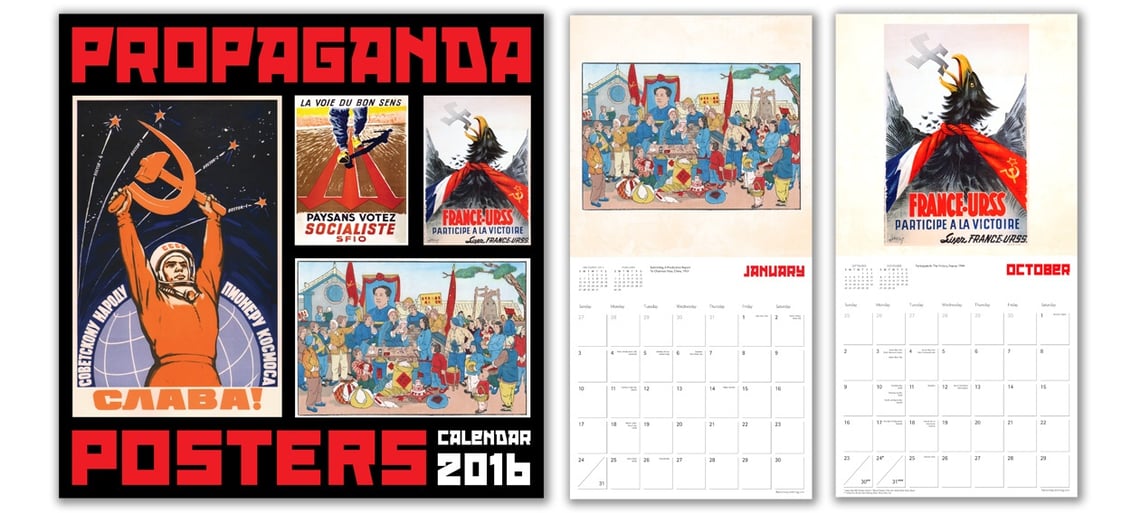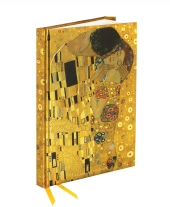
In the 20th century the power of the propaganda poster was unprecedented. Art pieces were plastered around cities, reinforcing the ideals of political regimes, especially those of communist parties found in Russia and China.
In China, the CPC (Communist Party of China) have used propaganda to great success, especially during the era of the infamous Chairman Mao. His many and varied campaigns used posters as a form of mass communication, tailoring art and text to either promote his party’s own policies, or censor rival viewpoints. Mao and the CPC were masters at projecting their messages (and ideas) to the entire country, which meant they also successfully reached those who lived in rural areas and were not literate.
Pre-1950s CPC
The CPC was born out of the May Fourth Movement, a protest that swelled from relatively modest student demonstrations. It sparked the national interest and inspired nationwide marches that opposed the seemingly weak stance of the ruling party. This period of change lasted approximately from 1919 to 1921 and established a new preference for the Chinese people, one that focused on the populous and not the elite; on the everyman, not the privileged. It seems that the Chinese people were strongly influenced by the 1917 October Revolution, in which the Russian people wrestled power away from the state. Their actions served as example for the Chinese, who felt they too lived in a politically oppressed country.
However, though the uprising prompted change it did not engender stability. But, fast-forwarding to 1 October 1949, after decades of civil war, the People’s Republic of China was established. Chairman Mao was now in power.
Information as a Form of Control
To spread confidence in the party, Mao produced posters as part of several nationwide campaigns; a genius move when considering the aforementioned illiteracy among rural communities. It meant his message reached a huge number of civilians. This helped establish Mao and the CPC as authoritative figures, guiding the country into a safe new era.
Unfortunately, these posters were not mirrors of the political or sociological landscape. Propaganda posters were so effective because of the way they framed messages through artistic depiction. This gave Mao the ability to manipulate the information supplied to the people, as through the 1950s, 1960s and even 1970s, TV sets and radios were still uncommon. Due to their low production cost, several billion posters were made through this 30+ year period.
Mao and the CPC used utopic scenes to maintain an image of a capable government. By routinely making posters that featured an array of people, all smiling, with abundant supplies of food on the table and lush gardens, the CPC convinced the Chinese people that under their rule this was a style of life being enjoyed by many, and was easily attainable for those that did not have it.
These pictures were made from a pairing of influences. Though there is a certain flair to some images, especially in the rendering of nature which echoes traditional Chinese folk art prints, the majority of figures were painted in the style of social realism – a form that had proved popular in the Soviet Union.
Mao, the Man-God
Towards the end of the 1960s, production of Chinese propaganda posters was booming. Artists were instructed to build a cult around Mao, shaping him into a god-like figure. These posters complemented the work going on elsewhere to establish this perception. When Mao’s Little Red Book was published in 1964, his ‘inspired thoughts’ worked in tandem with the increasingly transcendent images of the Chinese leader in posters.
Seeking the posters to be made according to set guidelines, the CPC needed to rely on a group that would follow their instructions dutifully. The army became responsible for the production of propaganda. Mao wanted to bring the majority of the Chinese population together, so that the bourgeoisie would be wiped out. He wanted the art to be realistic, represent the strength of the military and the contentment of the common man. This bred a new style of hyper-realism, which was quite distinct from the propaganda posters that had preceded them.
The posters eventually developed into a style of their own, finding a balance between message, style and effect. The realism continued and Mao’s wife, Jiang Qing, helped establish the ‘three prominences’. These were built around the importance of stressing certain aspects: positive characters; the central character (if not Mao, a figure representative of the CPC’s ideals); and a heroic quality. This meant that whilst the paintings were painted ‘realistically’, other elements were used to exacerbate the desired effect. This may be a hidden light source, helping the protagonists glow, or a subtle levelling out of gender distinctions – a way to implant egalitarian ideals into the art. It also helped the background players blend into one another; they would contrast the distinguishing characteristics of Mao, who would stand among them. Bathed in light, often slightly taller. Like a god.
The techniques used in propaganda posters are truly fascinating. Our 2016 art calendar collects a range of classic examples of the medium, offering insight into the posters that many civilians used to walk past on a daily basis. If you’re interested in taking a closer look at our calendar, click here. To browse our full range of 2016 calendars, you can click here.




